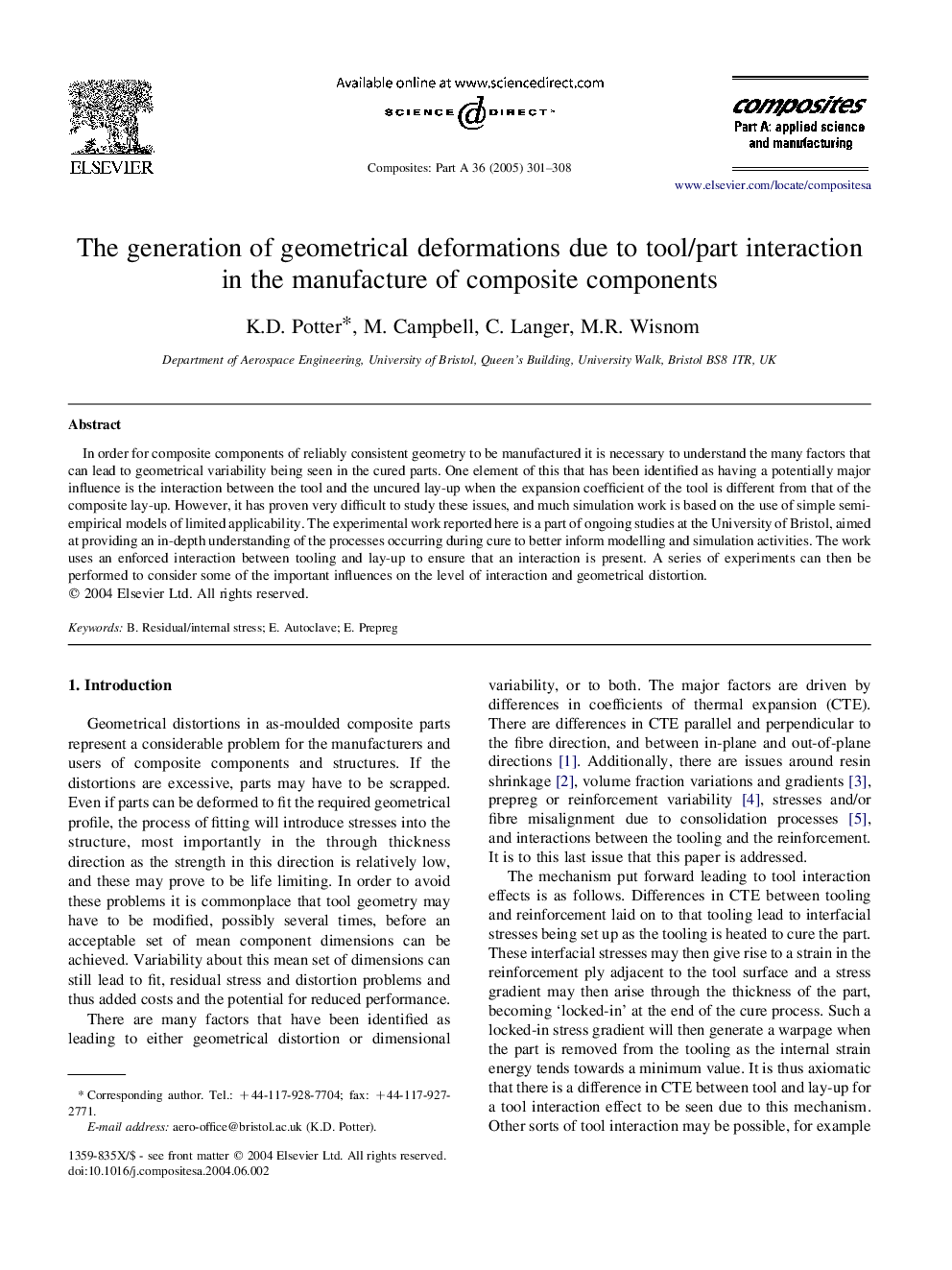| Article ID | Journal | Published Year | Pages | File Type |
|---|---|---|---|---|
| 10627804 | Composites Part A: Applied Science and Manufacturing | 2005 | 8 Pages |
Abstract
In order for composite components of reliably consistent geometry to be manufactured it is necessary to understand the many factors that can lead to geometrical variability being seen in the cured parts. One element of this that has been identified as having a potentially major influence is the interaction between the tool and the uncured lay-up when the expansion coefficient of the tool is different from that of the composite lay-up. However, it has proven very difficult to study these issues, and much simulation work is based on the use of simple semi-empirical models of limited applicability. The experimental work reported here is a part of ongoing studies at the University of Bristol, aimed at providing an in-depth understanding of the processes occurring during cure to better inform modelling and simulation activities. The work uses an enforced interaction between tooling and lay-up to ensure that an interaction is present. A series of experiments can then be performed to consider some of the important influences on the level of interaction and geometrical distortion.
Related Topics
Physical Sciences and Engineering
Materials Science
Ceramics and Composites
Authors
K.D. Potter, M. Campbell, C. Langer, M.R. Wisnom,
